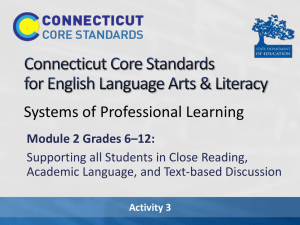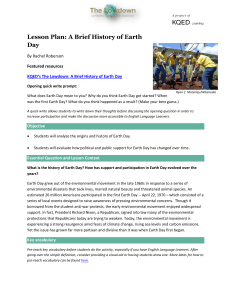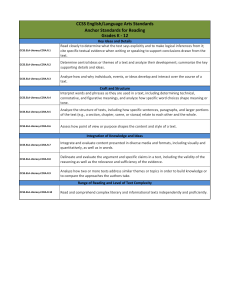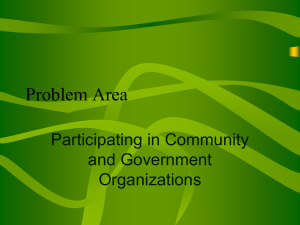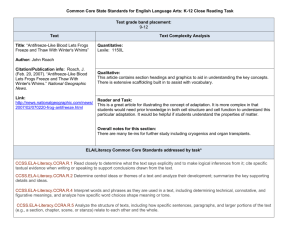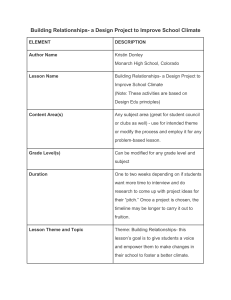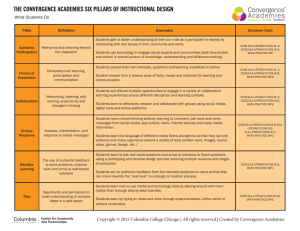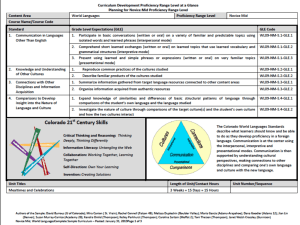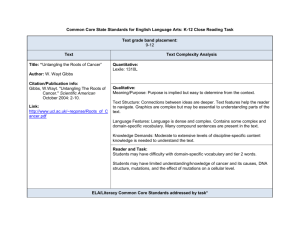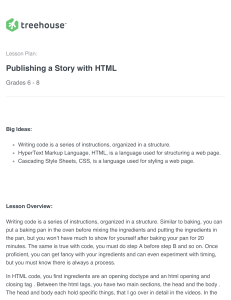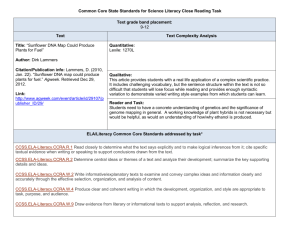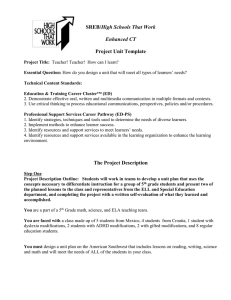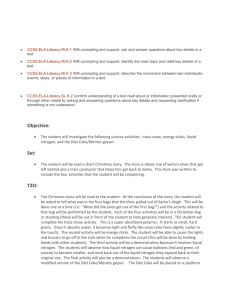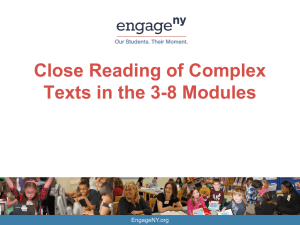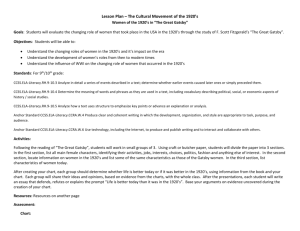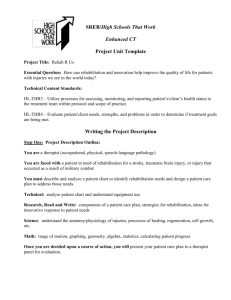Common Core Speaking and Listening Activities
advertisement
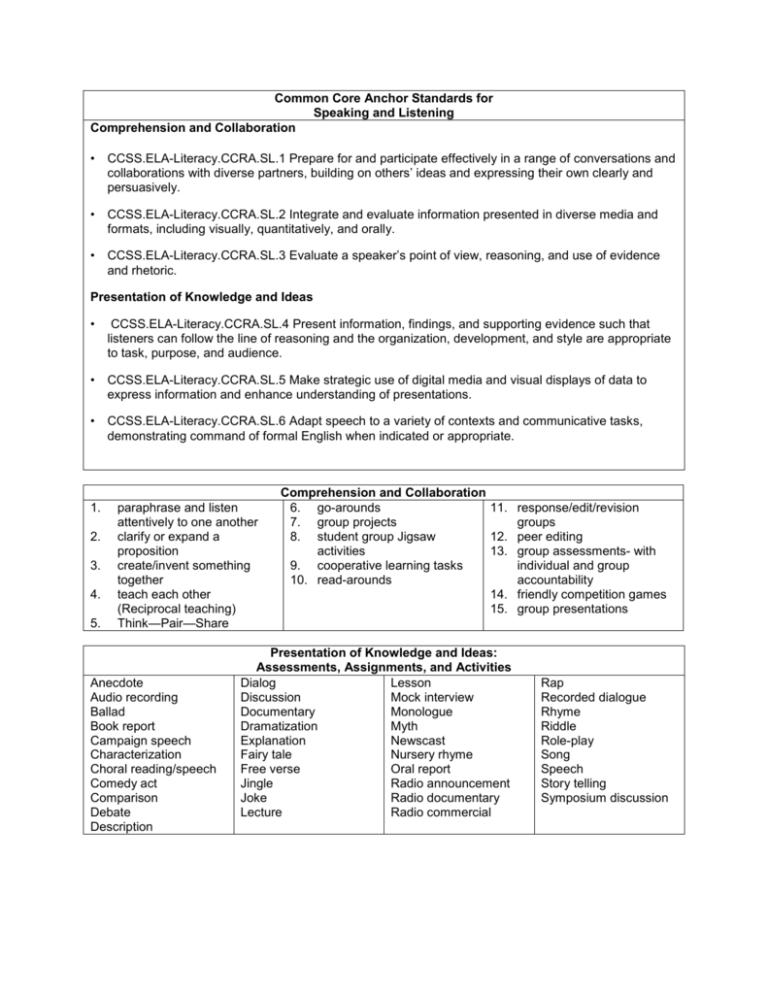
Common Core Anchor Standards for Speaking and Listening Comprehension and Collaboration • CCSS.ELA-Literacy.CCRA.SL.1 Prepare for and participate effectively in a range of conversations and collaborations with diverse partners, building on others’ ideas and expressing their own clearly and persuasively. • CCSS.ELA-Literacy.CCRA.SL.2 Integrate and evaluate information presented in diverse media and formats, including visually, quantitatively, and orally. • CCSS.ELA-Literacy.CCRA.SL.3 Evaluate a speaker’s point of view, reasoning, and use of evidence and rhetoric. Presentation of Knowledge and Ideas • CCSS.ELA-Literacy.CCRA.SL.4 Present information, findings, and supporting evidence such that listeners can follow the line of reasoning and the organization, development, and style are appropriate to task, purpose, and audience. • CCSS.ELA-Literacy.CCRA.SL.5 Make strategic use of digital media and visual displays of data to express information and enhance understanding of presentations. • CCSS.ELA-Literacy.CCRA.SL.6 Adapt speech to a variety of contexts and communicative tasks, demonstrating command of formal English when indicated or appropriate. 1. 2. 3. 4. 5. paraphrase and listen attentively to one another clarify or expand a proposition create/invent something together teach each other (Reciprocal teaching) Think—Pair—Share Anecdote Audio recording Ballad Book report Campaign speech Characterization Choral reading/speech Comedy act Comparison Debate Description Comprehension and Collaboration 6. go-arounds 11. response/edit/revision 7. group projects groups 8. student group Jigsaw 12. peer editing activities 13. group assessments- with 9. cooperative learning tasks individual and group 10. read-arounds accountability 14. friendly competition games 15. group presentations Presentation of Knowledge and Ideas: Assessments, Assignments, and Activities Dialog Lesson Discussion Mock interview Documentary Monologue Dramatization Myth Explanation Newscast Fairy tale Nursery rhyme Free verse Oral report Jingle Radio announcement Joke Radio documentary Lecture Radio commercial Rap Recorded dialogue Rhyme Riddle Role-play Song Speech Story telling Symposium discussion Speaking 1. Deliver planned and impromptu oral presentations, as an individual and member of a group. 2. Lead and participate in group discussions. 3. Implement strategies to self-monitor communication anxiety and apprehension. 4. Use verbal and nonverbal strategies to maintain communication and to resolve individual and group conflict. 5. Use multi-media and other visual resources during oral presentations. 6. Describe key components of communication theory and processes. Forms of Speaking 1. Debate 2. Group discussion 3. Oral Interpretation of literature 4. Public speaking for different purposes (e.g., inform/explain, argue, narrate) 5. Interpersonal conversations 6. Presentations using multi-media Dr. Bobb Darnell bobbdarnell@mac.com www.achievementstrategies.org Listening 1. Summarize and paraphrase spoken messages 2. Ask and respond to questions 3. Restate and carry out multi-step oral instructions 4. Identify and manage barriers to listening 5. Take notes 6. Interpret and respond to nonverbal messages 7. Use accurate content during conversations and group interaction 8. Listen and respond appropriately during interpersonal conflict ©2012

